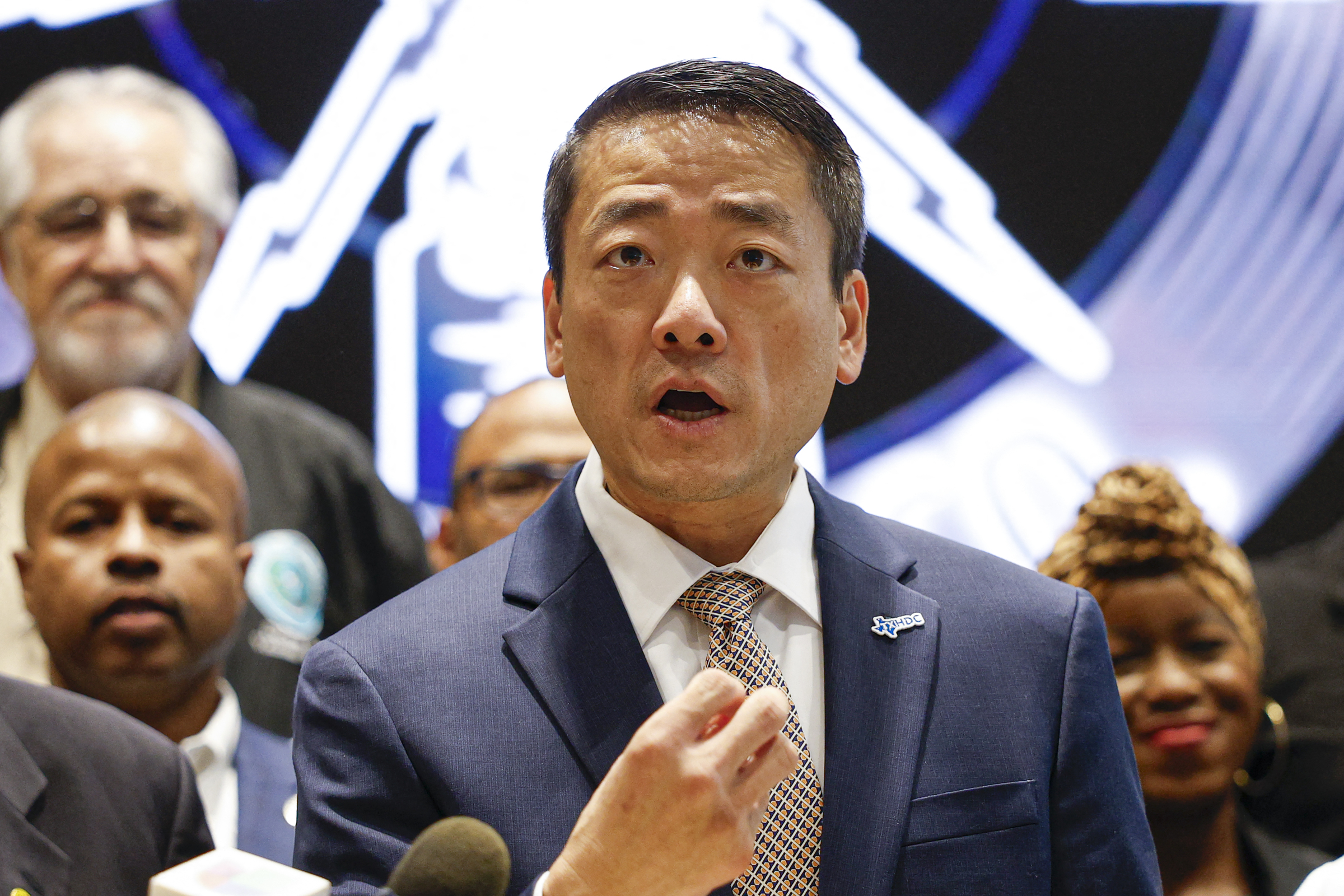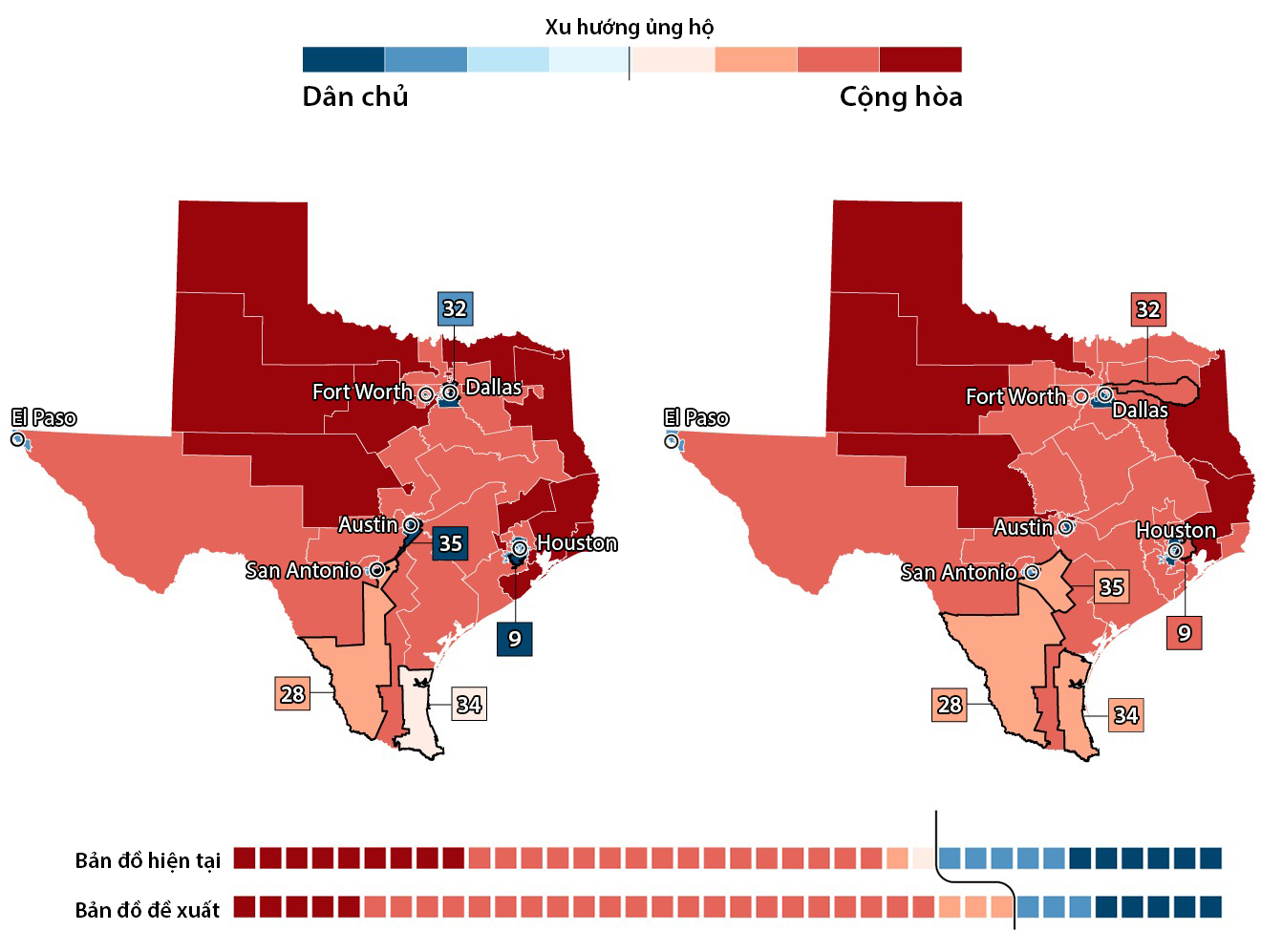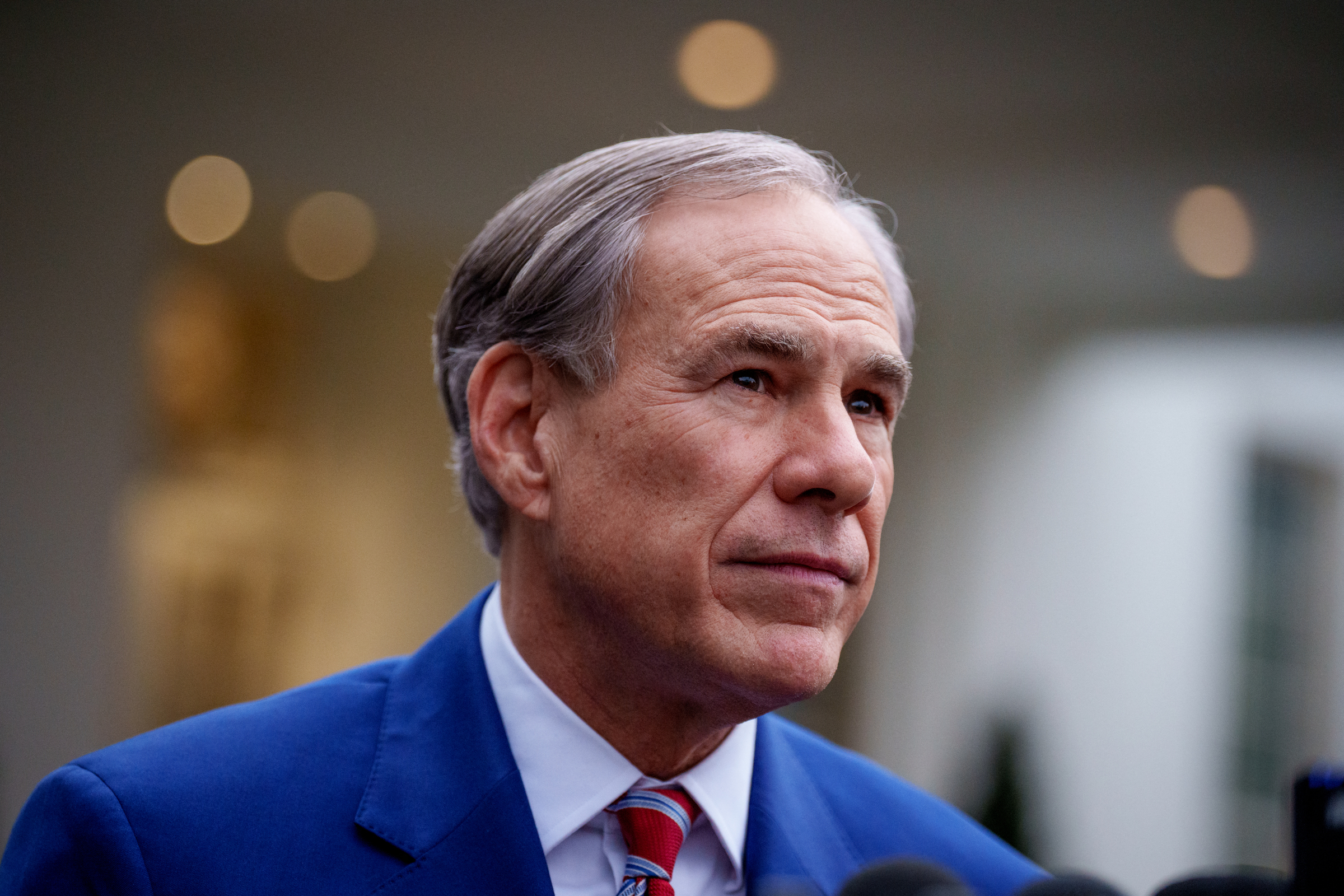Texas Republicans unveiled a proposed new electoral map on 30/7, adjusting the boundaries of five voting districts. This adjustment would likely grant the Republican party five additional seats in the U.S. House of Representatives in the 2026 midterm elections, solidifying their narrow majority in the federal legislature.
Following each decennial U.S. Census, states reallocate their representative seats in the House based on population changes. This process necessitates redrawing electoral district boundaries to ensure nearly equal populations within each district. The U.S. Census Bureau last completed its 10-year count in 2020.
Typically, state legislatures draft and approve new electoral maps. This often leads to the ruling party manipulating boundaries for an electoral advantage, sparking controversy.
The Texas House is scheduled to vote on the new map on 5/8. With Republicans holding an 88-62 majority, its passage is likely. However, this move has drawn fierce opposition from Democrats, igniting a legislative showdown.
"What's happening in Texas could happen in other states. This is former President Donald Trump's attempt to suppress voters, fearing what we'll do to him in the 2026 midterms," said Texas Representative Gina Hinojosa, a Democrat, vowing to fight back.
 |
Texas House Democratic Leader Gene Wu speaks in Illinois on 4/8. Photo: AFP |
Texas House Democratic Leader Gene Wu speaks in Illinois on 4/8. Photo: AFP
Republicans currently hold a slim 220-215 majority in the U.S. House, with four vacancies due to three Democratic deaths and one Republican resignation. If the Texas redistricting succeeds, further bolstering the Republican majority, it would benefit Trump's potential second-term agenda.
"We could pick up three, four, or five more seats in these states. Texas has the most—just by redrawing the lines, we pick up five seats," Trump said in July. Texas currently has 38 House seats, with Republicans holding 25.
The new map, introduced by Representative Todd Hunter, would adjust five voting districts to favor Republicans. This includes Districts 28 and 34, which lean Republican but are currently represented by Democrats. Democratic-leaning areas in Districts 9, 32, and 35 would be reassigned to already Democratic districts, effectively turning the former Republican.
 |
Current Texas electoral map and the proposed Republican version. Graphic: CNN |
Current Texas electoral map and the proposed Republican version. Graphic: CNN
Four of the five potential Republican gains are in predominantly Latino areas, a demographic that typically votes Democratic. Democrats criticize the plan as a "power grab," accusing Republicans of violating the 1965 Voting Rights Act by disenfranchising minority voters.
"If Trump can gut the Voting Rights Act in central Texas, this will spread like wildfire," said Democratic Representative Greg Casar, who represents District 35.
Lacking control of the Texas legislature, Democrats can only delay the process. Requiring a two-thirds quorum for a vote, 57 Democratic representatives left Texas on the afternoon of 3/8, mostly for Illinois, where Governor JB Pritzker offered his support. Others went to Massachusetts or New York.
"If you're watching this video, my Democratic colleagues and I have left our beloved Texas to stop this Republican power grab," Representative James Talarico posted on X before departing.
The Democrats plan to stay away for two weeks, until the current special legislative session ends. Governor Greg Abbott called the session on 21/7 to address flood relief, ban a cannabis compound, and approve the new electoral map.
Texas House Democratic Leader Gene Wu accused Abbott of "exploiting tragedy and using disaster victims for political games." Abbott criticized the Democrats for abandoning their constituents, stating, "Texans don't run from a fight."
Abbott, a Trump ally, ordered the Texas Department of Public Safety to arrest and return the absent legislators. However, the order applies only within Texas.
Abbott warned that a court could declare the Democrats' seats vacant, empowering him to fill them. Texas Attorney General Ken Paxton noted daily $500 fines for each absent Democrat, calling them "cowards."
Other Democratic leaders praised the Texas Democrats' strategy. U.S. House Democratic Leader Hakeen Jeffries expressed full support, calling it "necessary trouble" in response to Trump.
New York Governor Kathy Hochul likened the Republican effort to "a lawless band of cowboys seeking to steal democracy," adding, "If Republicans are willing to rewrite the rules to gain an advantage, then they're giving us no choice. We have to do the same, fight fire with fire."
 |
Texas Governor Greg Abbott in Washington on 5/2. Photo: AFP |
Texas Governor Greg Abbott in Washington on 5/2. Photo: AFP
It remains unclear how long the Texas Democrats will stay away and whether their tactic will succeed. A similar 38-day walkout in 2021 failed to stop a voting rights bill. Abbott could call another special session, a scenario Democrats seem unprepared for.
"We'll do whatever it takes. What that looks like, we don't know yet," said Gene Wu.
Nhu Tam (According to Washington Post, AP, CNN)












